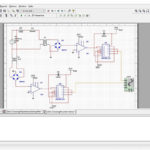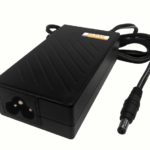Do schools teach young engineers the right skills? It is easy to find a lot of opinions on that subject from academics. It is more difficult to find assessments from experienced engineers who actually work with new grads. That’s why the comments of Richard Lukaszewski are worth hearing. As a holder of over 30 patents and an MSEE, he’s hired quite a few young engineers at Rockwell Automation where he is a manager of new product development for power electronics.
“Young engineers generally seem OK on the harder engineering skills. It is the soft skills where they are lacking,” he says. In particular, he wishes young engineers had better writing and reasoning skills. “They’ll often write reports that are either too detailed or lacking enough particulars. They also tend to present a whole lot of data but no conclusions or recommendations they’ll stand behind. That’s not why I’m paying them.”
Lukaszewski says he puts more emphasis on soft skills because the character  of design engineering has changed dramatically in just the last decade. “It has become much more process-oriented. The design part is probably a small portion of the day,” he says. “But the vast majority of a project consists of testing and communicating updates. So 80% of your time is in working with the other cross-functional teams to make sure the design is moving along.”
of design engineering has changed dramatically in just the last decade. “It has become much more process-oriented. The design part is probably a small portion of the day,” he says. “But the vast majority of a project consists of testing and communicating updates. So 80% of your time is in working with the other cross-functional teams to make sure the design is moving along.”
The changes in the nature of product development have led Lukaszewski to look for qualities in new hires that differ from those of a few decades ago. “One of the things I look for in a young engineer is the ability to talk and negotiate things. Sometimes when you read a spec it is kind of cold. You need to get a better sense of it by talking with people so you understand the tradeoffs. That demands an ability to negotiate to the spec with the product management people,” he says. “For example, we have motor drives with circuit boards that must carry 150 A. That’s high for a circuit board. It takes a lot of interaction between the power engineer and the board layout personnel to get something that’s right.”
And there are some aspects of design engineering that are tough to learn in school. “My highest performers know what ‘done’ looks like. They don’t gold-plate a design. Other engineers will work on a design to a point where it is beyond what is asked for,” says Lukaszewski. “Some people just seem to have a natural ability to do this.”
But some soft skills can indeed be learned. “Engineers have to go through one full design cycle to understand what it is all about, get the cadence down, and understand what is expected of them,” Lukaszewski says. To that end, he thinks a change in the engineering education process might be in order.
“The people we interview with a BS degree usually have done a design project in their senior year. I would like to see those projects more integrated with other disciplines so there is interaction with business, mechanical engineering, and industrial design people. That would take the project out of the realm of, ‘I built this circuit,’ and into the area of real development,” he says. “If nothing else, it would teach that you have to write requirements before you design anything.”





Leave a Reply